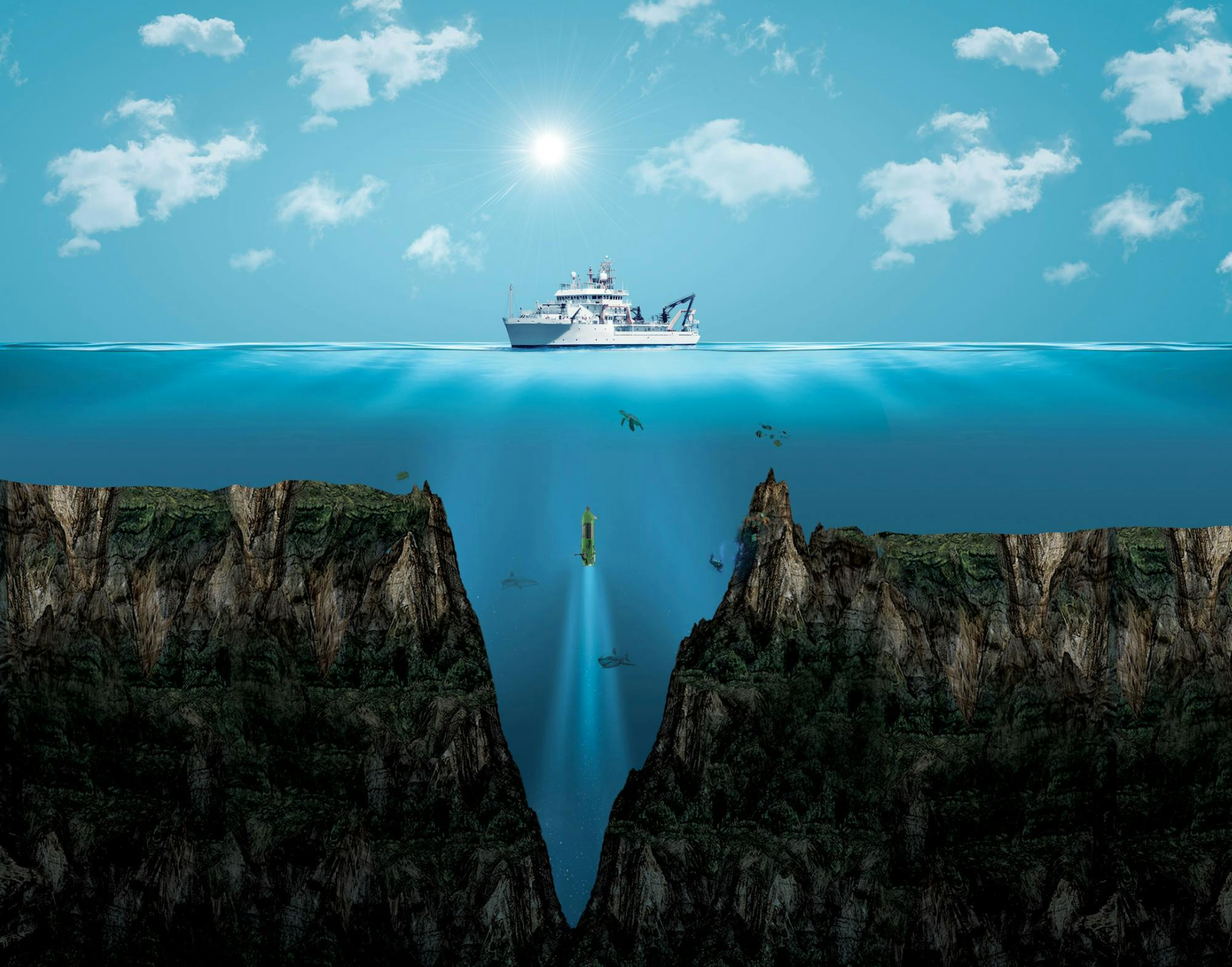5 MIN READ
5-28-2024
Not all plastic floats!
Up to 11 Million Metric
Tons of Debris on the
Ocean Floor
Mikaela Walsh, 4ocean Research Analyst
Yes, you read that right! Up to 11 million metric tons of plastic debris are accumulating on the ocean floor, forming a vast and troubling
reservoir of pollution.
The reality of plastic pollution is far worse than previously assumed. Plastic production is increasing exponentially worldwide as it builds up along our terrestrial and aquatic environments. Estimates show that anywhere from 4-23 million metric tons enter our oceans annually. Plastic was invented to last forever. The properties and composition of plastic do not decompose into organic matter, but rather, it will break down into smaller pieces of plastic, known as microplastics and nanoplastics. Plastic pollution has been widely observed across the surface of our ocean, along the coastlines, and even in the deepest parts of the world, the Mariana Trench. But, all plastic doesn't float. The densities of the plastic washing along the beaches and floating on the surface are smaller than the density of salt water. Have you ever considered where the heavy or more dense plastic debris items end up? The newest estimates of plastic debris stuck on the ocean floor reservoir are up to 11 million metric tons, considerably more immense than the amount of plastic pollution floating on the surface of our ocean
(Zhu et al., 2024).

In a recent estimate of the abundance of plastic debris sunk along the ocean depths, researchers were determined to quantify the severity of the issue. Using two data collection methods, this research used a model to predict the amount and distribution of macroplastic debris items. The first method was a remotely operated vehicle, also known as ROV, which was the favorable option due to the ability of the vehicle to reach deep depths and steep slopes. This method allows researchers to examine the amount of plastic along the bottom of the ocean; the only downside is that if plastic is underneath the top layer, it can not be noted because it is not visible. The second method used is trawling, where researchers examined the amount of debris caught by trawling nets in the deep waters. The results of the ROV method were used in the conclusion based on a more minor standard deviation and higher accuracy. Although the data collected from the trawling was not used in the conclusion of this paper, it was still helpful in understanding the gaps in research and the similarities between the data.
This is one of the first estimates made about the abundance of plastic debris across the ocean floor, which is predicted to be one of the largest reservoirs of plastic pollution. There are two main reservoirs known as ocean floor and bulk ocean sediment. Ocean floor reservoir refers to larger pieces of plastic sitting at the bottom of the ocean, which is the reservoir this estimated and examined. The other one, known as bulk ocean sediment, refers to the smaller pieces of plastic pollution, such as microplastics and nanoplastics, mixed in with the sediment. This research specifically examined the presence of macroplastics (over 5mm) in our deep sea floor. This is because sunlight is less abundant at deeper depths, and the plastic degradation rate is slower in cold environments.

ROV: Yellow, Trawl: Red
Macroplastic clusters tended to be around continents, which makes sense due to the human population and the plastic from the terrestrial environment. Based on the data, the prediction was that more plastic was found along the bottom of the ocean near shallower waters, less than 200 meters, comprising 46%, while the remaining percentage was in deeper waters. However, there is more area in the deeper section, so the abundance of plastic is estimated to be greater in the shallower waters near terrestrial environments. Most of the mass found along the floor was from the North Atlantic Basin, 14%, the North Pacific Basin, 7%, and the South Atlantic Basin, 6%. It is further predicted that the abundance of plastic along the continental shelves is higher due to the proximity of the terrestrial environment and human activities.
This research aimed to bridge gaps and further understand the behavior of plastic pollution once it enters the marine environment. The researchers expressed the need for more research at a greater density along the ocean floor, in the deep sea. One of the leading questions about plastic pollution is where the hotspots for the accumulation of plastic debris are. Plastic debris entering our oceans is not decreasing but rather the opposite. Due to this, these areas are expected to continue accumulating debris.

This scientific publication expresses that the oceanic plastic crisis is much worse than previously thought. Plastic pollution has exceptionally detrimental effects on all forms of marine life in the ocean. A worse thought is that this plastic is even entering human beings. Plastic is not only an eye sore, but it is a killer. It has been widely observed across all continents to have deadly effects on marine life by ingesting plastic debris and entanglement. We encourage you to reduce your single-use plastic consumption and end the oceanic plastic crisis with us.

You May Also Like




